Artificial Intelligence in Education: Where It’s At, Where It’s Headed

Artificial intelligence is predicted to fundamentally alter the nature of society by 2040. Investment in AI start-ups was estimated at $6-$9 billion in 2016, up from US$415 million four years earlier. While futurist Ray Kurzweil argues that AI will help us to address the grand challenges facing humanity, Elon Musk warns us that artificial intelligence will be our “biggest existential threat.” Others argue that artificial intelligence is the future of growth. Everything depends on how we manage the transition to this AI-era.
In 2016 the Obama administration released a national strategic plan for artificial intelligence and, while we do not all suddenly now need a plan for artificial intelligence, we do need to stay up to date on how AI is being implemented. Much of AI’s potential is yet to be realized, but AI is already running our lives, from Siri to Netflix recommendations to automated air traffic control. We all need to become more aware of how we are algorithmically shaped by our tools.
This Australian discussion paper on the implications of AI, automation and 21st-century skills, shows how AI will not just affect blue-collar truck drivers and cleaners, it will also affect white-collar lawyers and doctors. Automated pharmacy systems with robots dispensing medication exist, Domino’s pizza delivery by drone has already occurred, and a fully automated farm is opening in Japan.
Radical Disruption
The cumulative effect of these changes will be radical disruption to our lives. Modeling by the Oxford Martin School predicts that 47% of employment in the United States is at risk of becoming automated. However, Purdy and Daugherty argue that this is an overestimation and that the challenge is to ensure sufficient retraining for low qualified workers as new roles will emerge and demand in some occupations will grow.
Two decades ago graduation from high school opened the door to the middle class. It no longer does. The skills now required to earn a decent living have changed markedly and high-wage employers are seeking a mix of hard and soft skills.
The students who entered school this year will be graduating by 2030. They will be the workforce of 2040. The extreme changes about to arrive require an approach to education that will provide our current students with the skills and capabilities to make the most of the world they will be entering. To succeed, they need to be able to think flexibly, creatively, and globally. The competitive advantage is now your ability to offer value beyond an algorithm.
Education is the Key
While many of us have even seen headlines predicting that robots will begin replacing teachers within the next ten years, good teachers will never become obsolete. However, Artificial Intelligence is beginning to transform classrooms through customisable content, and tracking and monitoring diagnostics. AI can automate basic routine work such as grading simple tests. It can apply greater levels of individualization through adaptive learning programs, games, and software, and AI tutors can support students through basic Mathematics. Pearson is working on a range of online games based on AI. Mindojo is developing algorithms that both teach and study you to get to know exactly who you are. Standardized tests will be able to be taken multiple times. Adaptive testing will provide questions that suit the current ability of individual students. There are calls for technology companies and higher education institutions to prepare K-12 teachers by providing curriculum materials and further education opportunities.
Education will be a key driver for the innovation economy and a focus on literacy and numeracy is no longer enough. Young people also need problem-solving, digital literacy, collaboration, and communication skills. There are several steps teachers can take to help make students robot-proof. Developing creative mindsets, the entrepreneurial agility to invent original ideas, and the disposition to continuously keep learning are keys. Tom Vander Ark suggests that the best way for schools to prepare is to focus more on social and emotional learning, deeper learning, computational and design thinking, financial and entrepreneurial literacy, and expressing ideas. Problematically, there is not a wide body of research-based evidence about effective teaching practice for so-called 21st-century skills for teachers to draw on, but this has not stopped forward-thinkers from examining skills that will be necessary and strategies for moving forward.
The Australian discussion paper concludes by asking these questions:
- If we need to lift the skill level of all students, including our best and brightest, what changes might need to be made to curriculum and assessment?
- If we expect tomorrow’s kindergarten students to be able to know more, learn more and do more, what does this mean for teaching and teachers?
- If schools must prepare students for a world profoundly altered by automation and AI, what implications does this have for today’s education infrastructure?
- If schools are to be more responsive to the needs of a rapidly changing world, what is the role of higher education and industry in supporting this?
Education reformers need to plan for our AI-driven future and its implications for education, both in schools and beyond. The never-ending debate about the sorts of skills needed in the future and the role of schools in teaching and assessing them is becoming a whole lot more urgent and intense.
For more, see:
- Artificial Intelligence in Education: Don’t Ignore It, Harness It
- The Future of Skills: Employment in 2030
- Getting Smart Podcast | Michael Moe on AI in Human Resources in Education
Stay in-the-know with all things EdTech and innovations in learning by signing up to receive the weekly Smart Update.
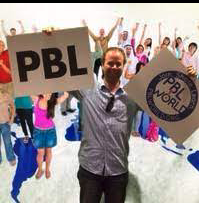

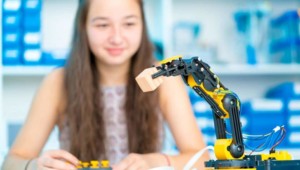
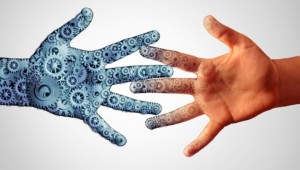
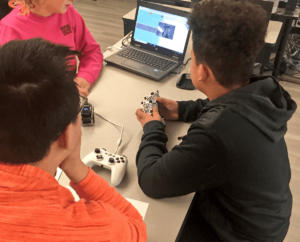
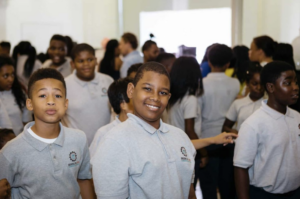
Android robo
The problem for young people is to solve digital literacy, collaboration, and skills. There are several steps to help students build a robot-proof. Creativity, development of initiative, finding original ideas, and continuing to continue learning.